It’s 11:36 on a Monday, 25 August 2025. Not just any Monday but the one after Mercedes-AMG rewrote the electric car record books with its new GT XX concept.
Under leaden skies, the air at Nardò Technical Centre in Italy still hangs thick with the afterglow of automotive history in the making. Barely 12 hours have passed since the sunset-orange super-saloon lapped the high-speed banking for the 3177th time to bring up a total distance of 24,901 miles – the official circumference of the equator – in seven days, 13 hours, 24 minutes and seven seconds.
It’s a record that Mercedes-AMG CEO Michael Schiebe says was inspired by the Jules Verne novel Around The World In 80 Days. “Except we decided to shorten it to eight,” he tells me with a knowing grin, emotion still faintly creasing his voice.
This wasn’t a publicity exercise designed to generate short-term headlines. It was the most ambitious and, arguably, most meticulously planned electric car endurance record campaign ever attempted. In total, 26 world records were set.
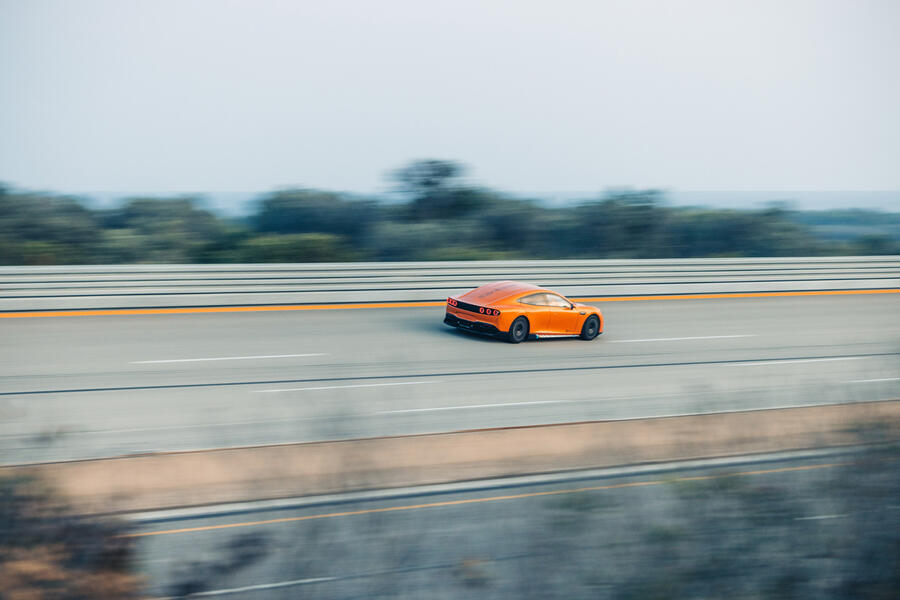
It wasn’t all plain sailing, though. Ambient temperatures soared past 35deg C during the day before plunging to 20deg C overnight, while periods of torrential rain and a brief power cut within Nardò’s electricity infrastructure added a layer of unpredictability that no simulation could fully anticipate.
The new 24-hour electric car distance record is perhaps the most high-profile of all up to now: 3404 miles. That's some 943 miles or 38% farther than the Xpeng P7 managed earlier this month.
To put this into perspective: the GT XX eclipsed the P7’s short-lived 24-hour record of 2461 miles in just 17 hours and 18 minutes, then, with nearly seven hours still on the clock, it continued circulating Nardò, covering the additional 943 miles – roughly the distance between London and Barcelona – with only brief stops to top up its battery and, while doing so, fit new tyres when required.
That alone would have been headline-worthy in itself, but Mercedes-AMG, looking to make a much bigger statement, pressed on in earnest.
The records continued to tumble for a further week, the GT XX establishing additional benchmarks for 48, 72, 96, 120, 144 and 168 hours.
The Porsche Taycan rival also posted new records at 2000, 5000, 10,000, 15,000, 20,000 and 25,000 miles, among others.
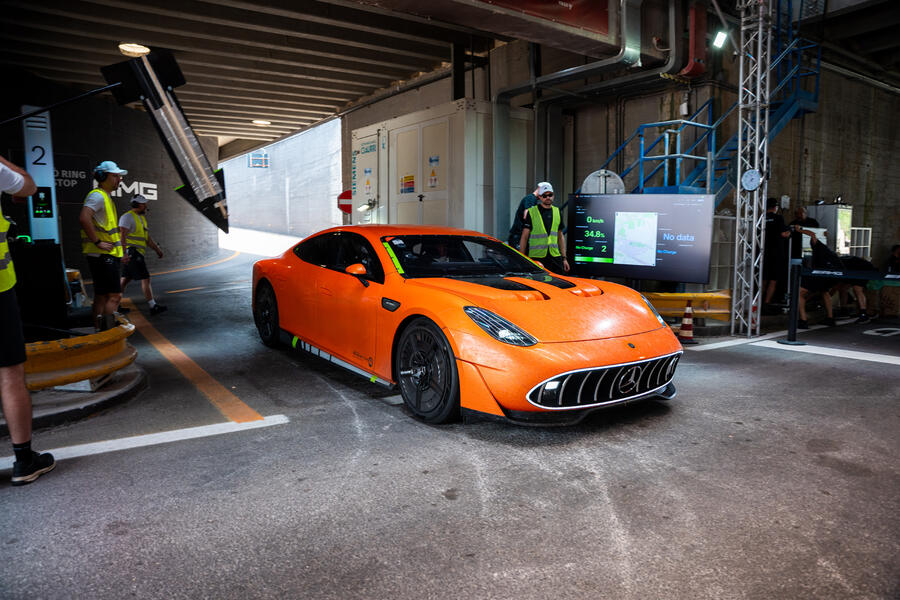
In a clear sign of the depth of its commitment and desire to eliminate any single point of failure, Mercedes-AMG didn’t just employ one GT XX for the task; it ran two in tandem, each with its own dedicated team of engineers, drivers and logistics support. Each was distinguished by coloured markings within the side sills.
“We took a lot of our approach from motorsport,” says Schiebe. “We had team blue and team green. The two pushed each other. It got so intense early on that we had to tell them to slow down.”
Now, less than half a day later, one of those GT XXs is rolling again, this time with me strapped into the passenger seat.
Apart from a tell-tale film of grime covering its bodywork, the 5204mm-long saloon looks untouched from its debut at Mercedes-AMG’s Affalterbach headquarters in Germany back in June.
Inside, the cabin is even more evocative. Everything is still as it was during the record attempt. The seat is firm. The six-point seat belts are stiff. The cabin is remarkably clean and unspoilt for something that has just travelled over 3000 miles for each of the past eight or so days with barely a breath between stint. It hasn’t had a lot of time to cool down. Neither has the team.
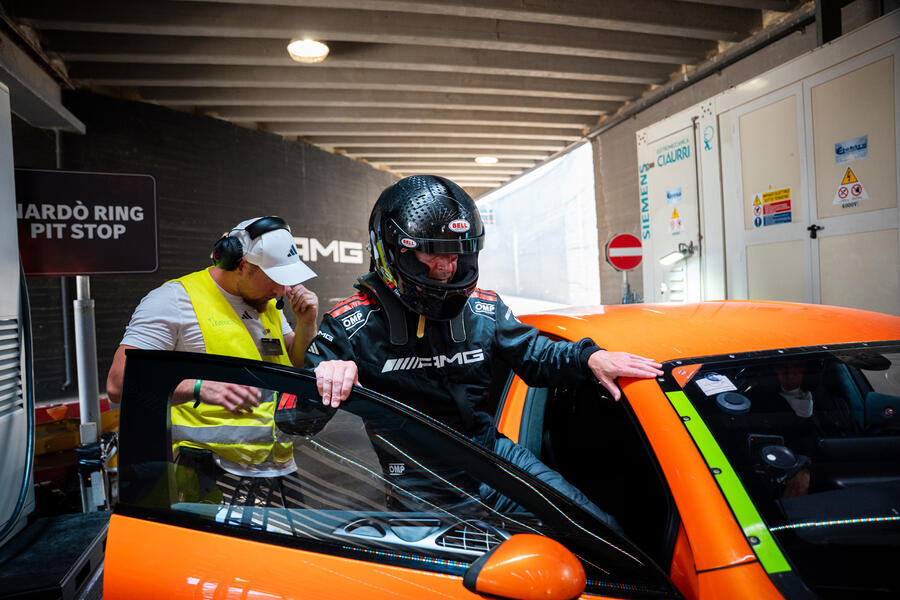
So, this is Nardò, the 7.8-mile circular high-speed test track carved into the heel of Italy’s boot. Once a Fiat proving ground, today it’s owned by Porsche but run as a global engineering centre open to paying customers. There are no corporate walls or rivalry here, just respect and reverence.
Mercedes-Benz has been here before, of course. In 2024, it set a new electric car 24-hour hour distance record with the new third-generation Mercedes CLA saloon at 2310 miles. Back in 1976, the German car maker’s C111 research prototype also set multiple endurance records here, establishing a legacy Schiebe says served as inspiration.
The low and sleek styling of the GT XX, which boasts a remarkably low drag coefficient of 0.19, gives clues to how its production sibling will look.
But it is what lies beneath that makes this a technological milestone, not just a design study. It’s based on Mercedes-AMG’s all-new AMG.EA electric car architecture, the first bespoke electric platform from the company and entirely separate to those used in standard Mercedes-Benz models. The production car that the four-door concept previews, the next GT 4-Door Coupé, is planned to arrive in the UK before the end of next year.
That car will inherit the GT XX’s drivetrain: a triple-motor layout with two axial flux motors (developed in partnership between Mercedes-AMG, Oxford-based Yasa and Mercedes-AMG’s Brixworth High Performance Powertrain division) at the rear and a smaller axial flux booster motor sitting up front. In total, they deliver a combined 1341bhp.
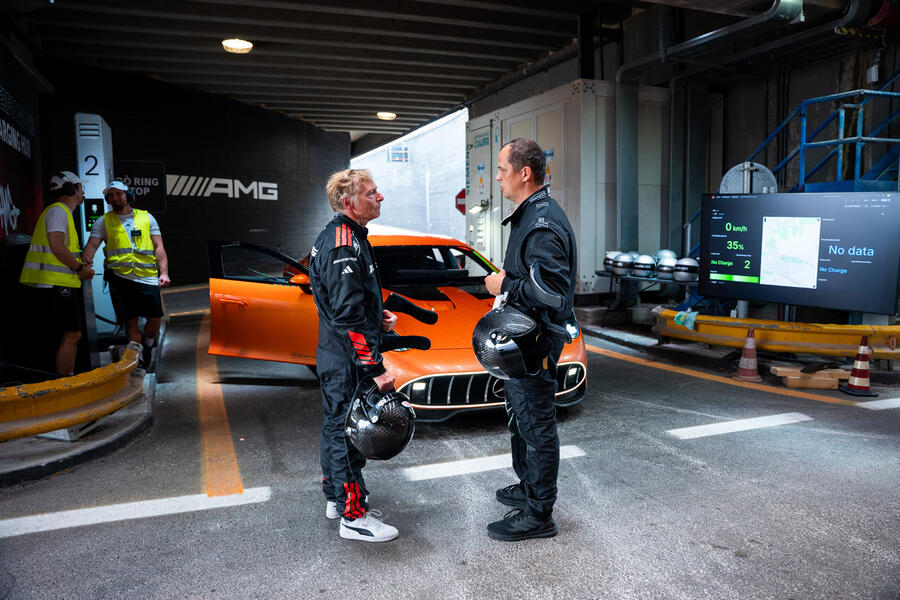
Power is delivered through a single-speed gearbox and supported by an oil-immersed cylindrical-cell battery pack, featuring direct liquid cooling and a theoretical charge rate between 850–900kW. A 249-mile range, Mercedes-AMG says, can be added in less than five minutes.
The man at the wheel today - Florian Fröhlich, a veteran from Mercedes-Benz's test and development ranks also heavily involved in the CLA’s record breaking feats - gives a final nod and nudges the throttle. There’s no fuss, no sound, just clean, linear forward movement. Seamless. Smooth. The first half mile or so is silence and serenity.
And then, once we clear the slip road and enter the wide expanse of the Nardò track itself, it hits. Not just typical performance saloon car acceleration, something stronger – much stronger. Supercar-like in intensity but again eerily silent.
That’s when I remember Schiebe telling me the records were set without the assistance of Mercedes-AMG’s new sound generator. “We will offer it to customers, and it will be an integral part of the production car. But for the campaign at Nardò, our team decided to do without it.”
As we leave the pit complex behind us, we are doing 50mph. Then 100mph. And very nearly 150mph before we’ve even crossed the three lanes into the outer banked section. The GT XX settles well, squatting imperceptibly into the groove it has carved for itself over the past week.

Even at this lick, there’s no drivetrain noise at all. Just the sound of the bespoke Michelin tyres on the track surface and a persistent buffeting wind around the outer edges of the windscreen. Today, we’re restricted to 155mph but the swiftness and clarity in how it goes about its business leaves no doubt that it was engineered for vastly more.
This very car held an average of 186mph for eight days straight, excluding charging. A team of 17 drivers, including Formula 1 star George Russell, rotated in eight-hour shifts, supported by over 130 engineers and logistics staff on-site at Nardò. Scores more monitored the car and its identical twin from command centres in Affalterbach and Brixworth. A charging infrastructure with over 1.5 miles of cable was laid across the test facility to support it all. Seven radio channels and more than 8000 transmissions a day kept every detail coordinated. Some 46 tyre changes were made and 300 windscreens washed.
And what a strategy. Mercedes-AMG didn’t just build a fast electric saloon. It also built a predictive performance system derived from its experience in F1 racing, complete with intelligent thermal management and cloud-optimised charging logic. Later we’re shown graphs, heat maps, telemetry overlays and charging profile showing how every second on track was planned and recorded. Each record-breaking stint was meticulously simulated, run, analysed and tweaked in the months leading up to the record attempt. Then rerun again. This wasn’t the setting of endurance marks by brute horsepower. It was more record-breaking by algorithm.
While the GT XX has a claimed top speed of 224mph, Schiebe says his engineering team never considered pushing beyond the 186mph average. “It’s the sweet spot: the point we calculated we could achieve the best possible trade-off between outright speed and aerodynamic drag.”
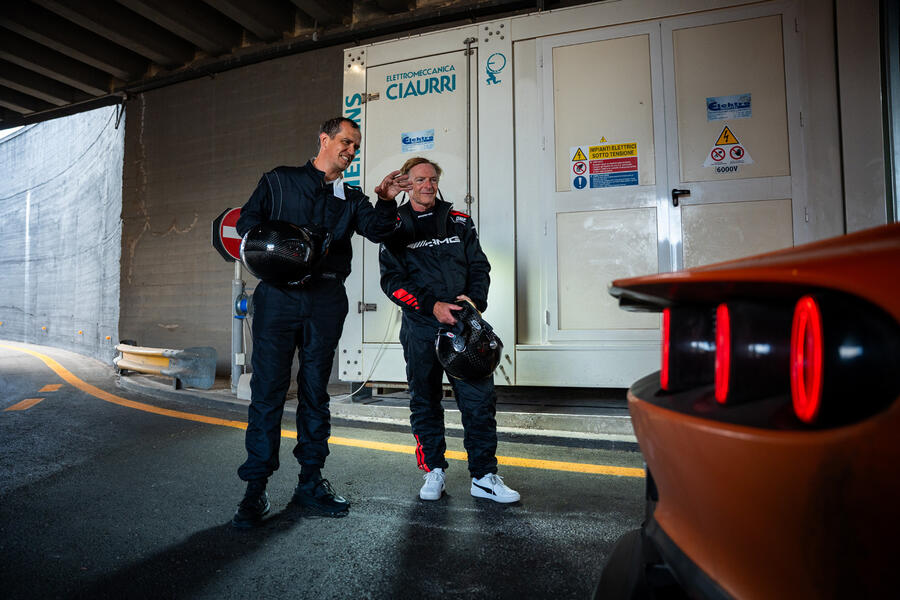
Back in the car, it’s difficult to reconcile the violence of the performance with the calmness of the experience. There’s no twitchiness, no nervousness, only composed, sustained power and uncanny straight-line stability. The sheer effectiveness of the aerodynamics within the underbody, which is shaped to create a venturi effect, means the entire record attempt was run without the need to deploy the GT XX’s rear spoiler. The cooling was another key factor.
The research prototype’s active wheels, which house five separate panels that can open to increase air flow, remained closed during on track running to ensure the lowest possible drag, opened only while charging to dissipate heat. The centre-lock wheels showcased with the car back in June were shelved in favour of more conventional five-bolt wheels.
The view from the outer lane of the high speed bowl is spectacular - at one point the horizon dissolves into a shimmering blue Mediterranean haze of ocean. But the nearby guardrail is a constant reminder of your speed and what’s at stake. The circular nature means there is no defined straights, with the steering wheel always held slightly off-centre to compensate. In the lead up to the record attempt, Mercedes-AMG settled on running in an clockwise direction. “We had the choice but with the prevailing winds and such, we considered it the best option,” Schiebe reveals.
After two unforgettable laps and nearly 15 miles, the radio cackles and we’re called into the pit. Fröhlich lifts. The GT XX coasts without any direct power for almost a mile, a procedure used for each and every charging stop during the record run, he tells me.
As we get to the pit entry marker, there’s an immediate and tangible tug as the regenerative braking system is triggered, scrubbing off speed with smooth, magnetic deceleration. It’s as if the disc-shaped axial motors have turned into huge anchors, yanking the big saloon back from the brink. Mercedes-AMG says it can recuperate up to 600kW of kinetic energy in such conditions. And honestly, it feels like it.
We roll to a halt under the bridge where Mercedes-AMG has set up a makeshift technical bunker for the record run. Banks of computers hum inside a temporary command centre made up of white-painted shipping containers. The pit crew, as focused as at any F1 race, move quickly, lifting the charging flap hidden under the right-hand rear fender and attaching the DC charging plug.
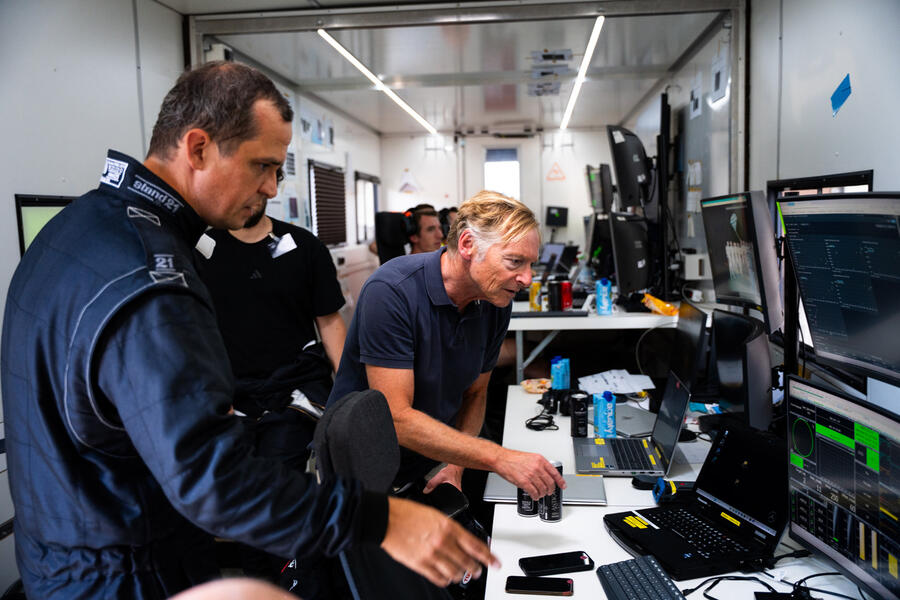
Instantly, a readout blinks to life and the numbers begin to roll on the GT XX’s display like a digital slot machine: 100, 200, 400, 800kW… and still rising. No hesitation, no let-up. By the time it nudges past 850kW, I glance over to the driver. He’s grinning. “That’s part of the secret,” he says, watching the display tick on. “With such rapid charging, our stops during the record run were between two and four minutes.”
And still the numbers continue to climb: 920, 930, 940, 950kW and then, finally, the peak, 965kW. That’s nearly six times the 170kW charging capacity of the existing Mercedes-AMG EQE 53 4Matic+. And we’re witnessing it live in the field using the same Alpitronic charger used throughout Mercedes-AMG’s eight days of record-breaking.
One thing’s clear. The Mercedes-AMG’s record run with the GT XX wasn’t just about lapping a test track quickly. It was about redefining the upper limits of what integrated electric car performance can be, both now and in the future: from drivetrain operating strategy, battery chemistry, aerodynamic control, thermal management to software analytics, energy recuperation, tyre optimisation and much more.
It didn’t just chase records; it created a rulebook for how to break them.

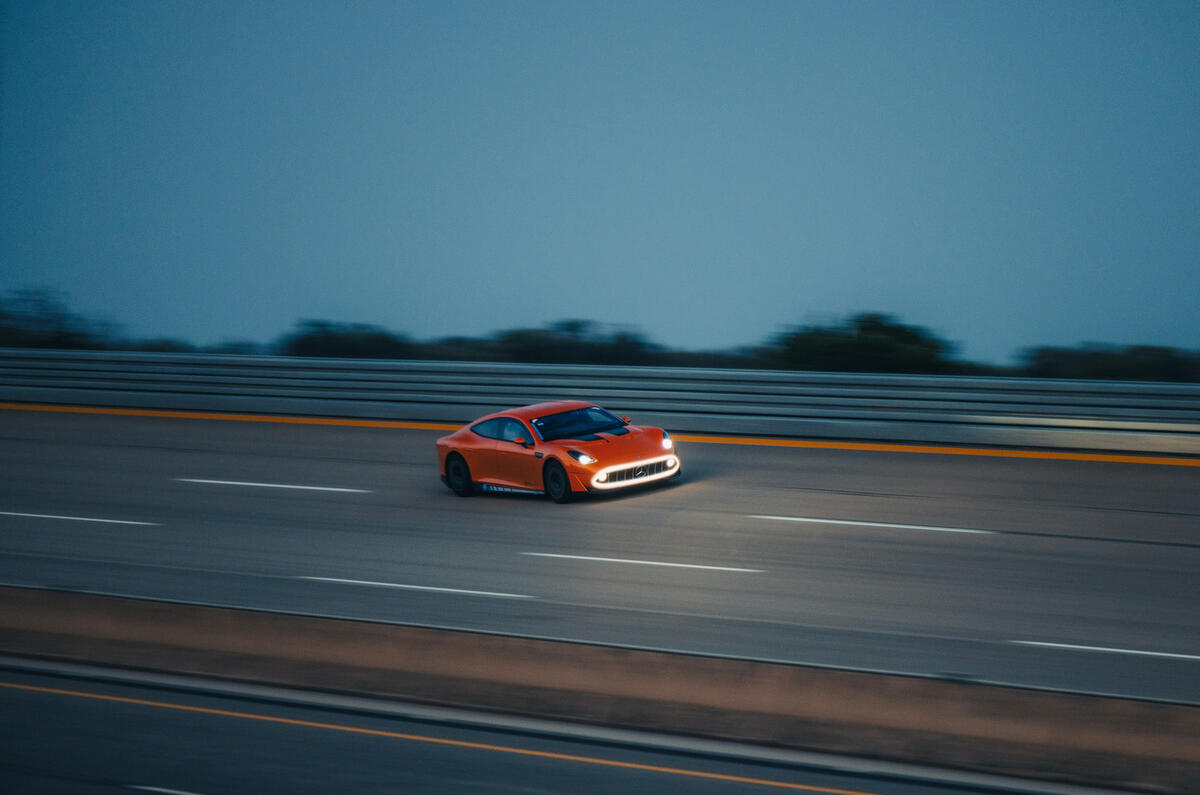


Join the debate
Add your comment